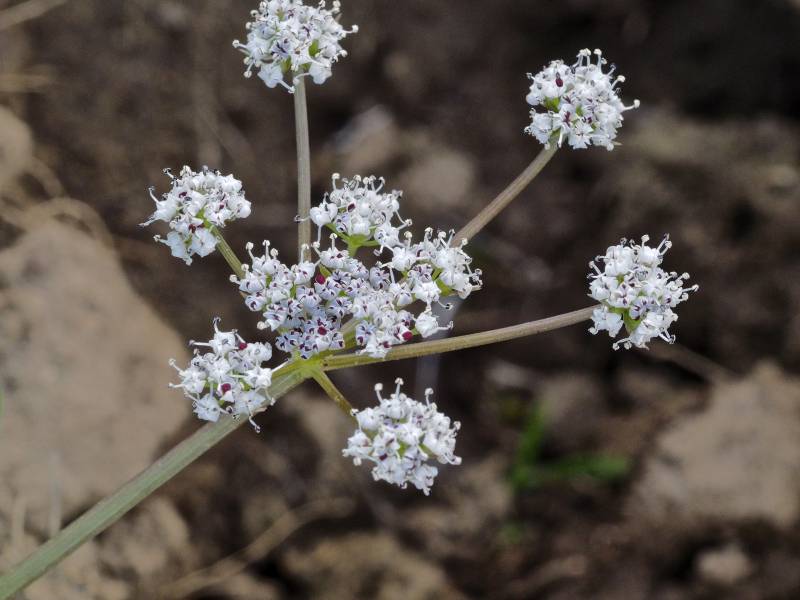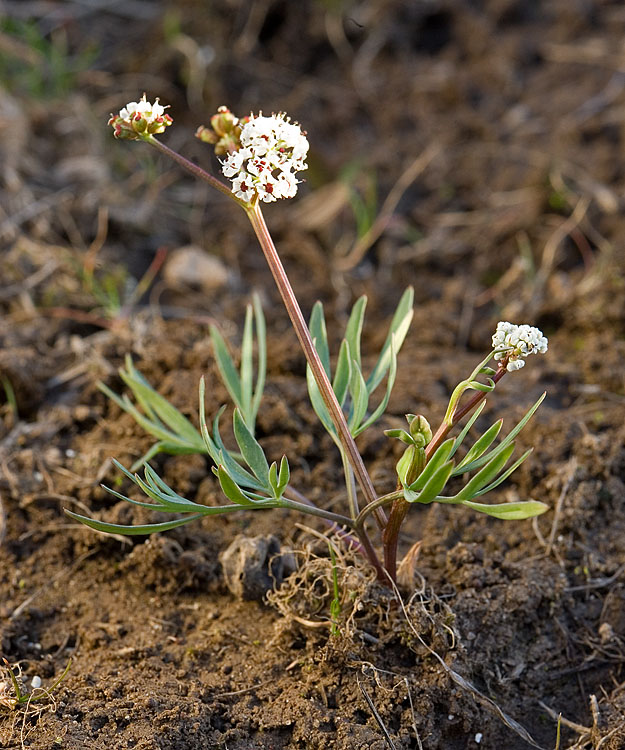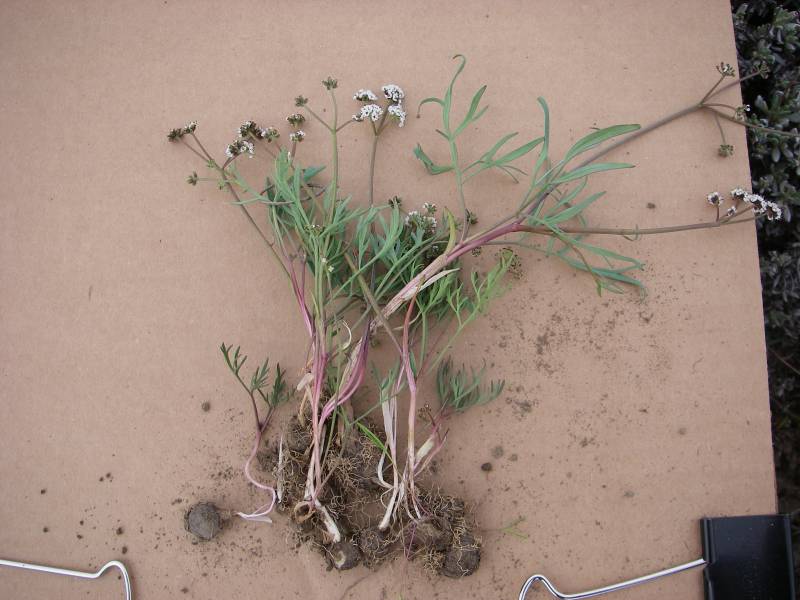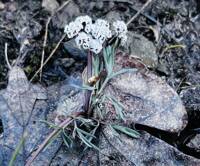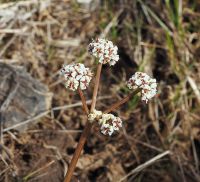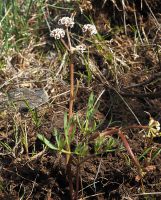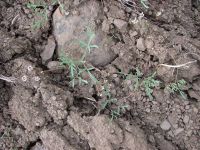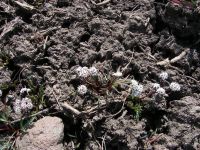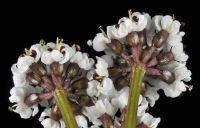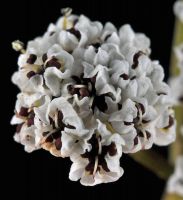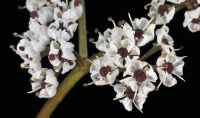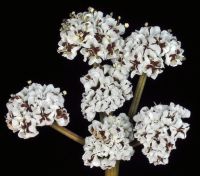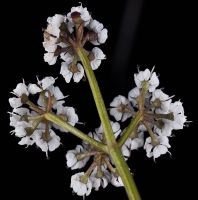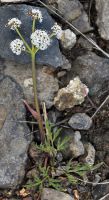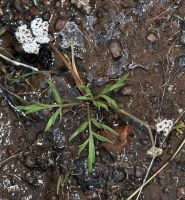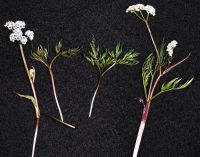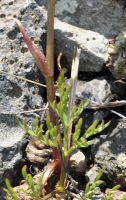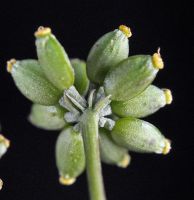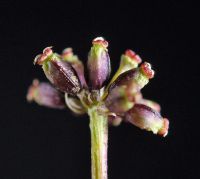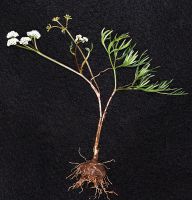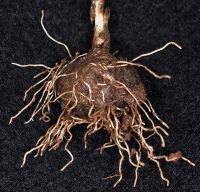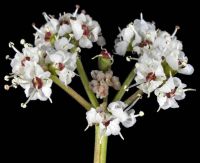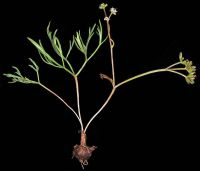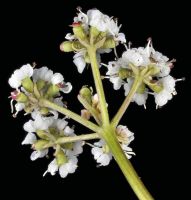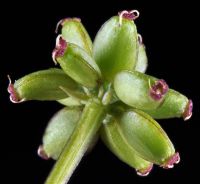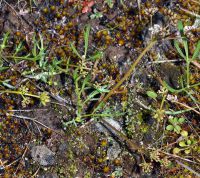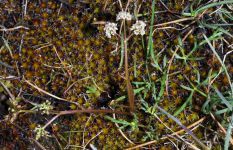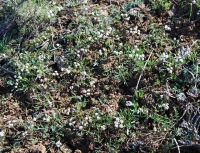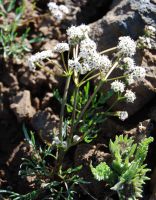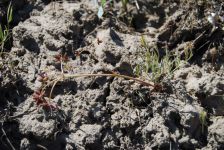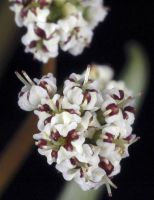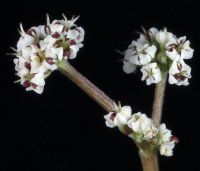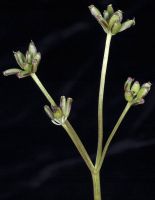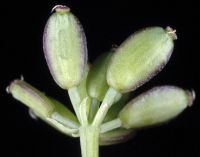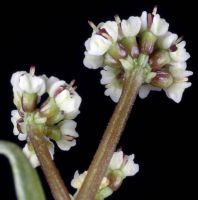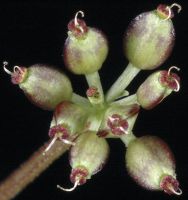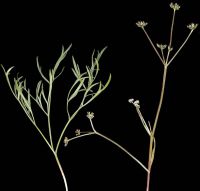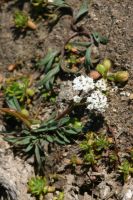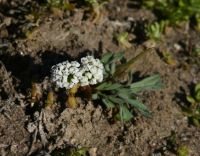Distribution: Occurring east of the Cascades crest in Washington; central Washington to northern California.
Habitat: Sagebrush desert to ponderosa pine forest openings.
Flowers: February-June
Origin: Native
Growth Duration: Perennial
Conservation Status: Not of concern
Pollination: Bees, flies, butterflies, beetles, wasps
Low, glabrous perennial from a globose-thickened taproot, with each stem bearing at least one cauline leaf, 10-25 cm. tall.
Leaves few, bi-ternately compound and pinnately-ternately dissected; petiole slender, sheathing, green or purplish tinged; leaf blades oblong to ovate in outline, 1.5-5.5 cm. long, glabrous; ultimate leaf segments 10-30, linear, 0.2-4 mm. long. Thickened root 0.5-1 cm. in diameter, brown, smooth.
Umbels usually 2, one terminal, the other borne in the axil of the single leaf; rays 3-10, 1.5-3.5 cm. long; involucre none; involucel bractlets 2-6, narrowly elliptic, 0.5-2 mm. long; calyx obsolete; flowers white, with purple anthers; pedicels 0.5-2.5 mm. long.
Fruit ovate, 4-9 mm. long and 2.5-5 mm. wide, the lateral wings the width of the body.
Compared to L. piperi, L. gormanii has no stem leaves, the globose root is covered with rootlets, and the wing on the fruit is narrow.
Publication: Contributions from the United States National Herbarium 7(1): 211. . 1900.
PNW Herbaria: Specimen records of Lomatium piperi in the Consortium of Pacific Northwest Herbaria database
WA Flora Checklist: Lomatium piperi checklist entry
OregonFlora: Lomatium piperi information
E-Flora BC: Lomatium piperi atlas page
CalPhotos: Lomatium piperi photos

